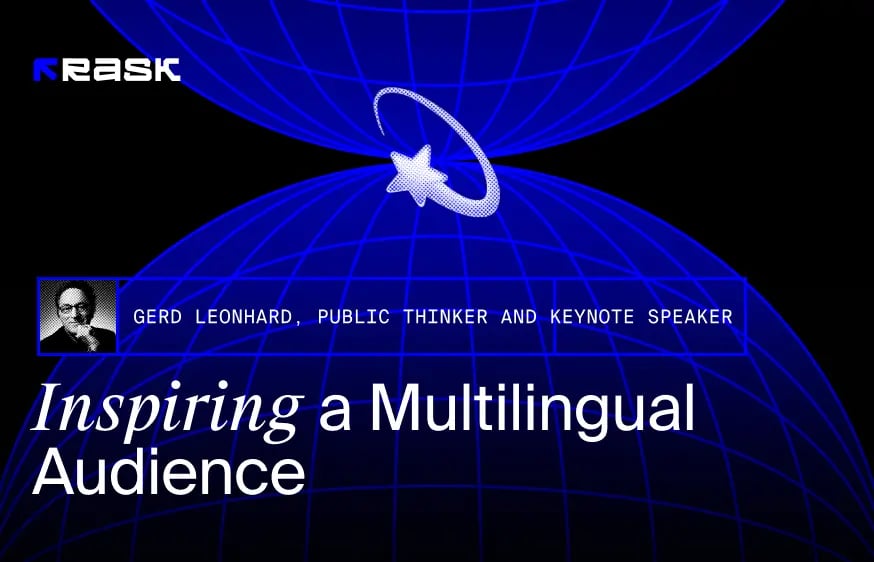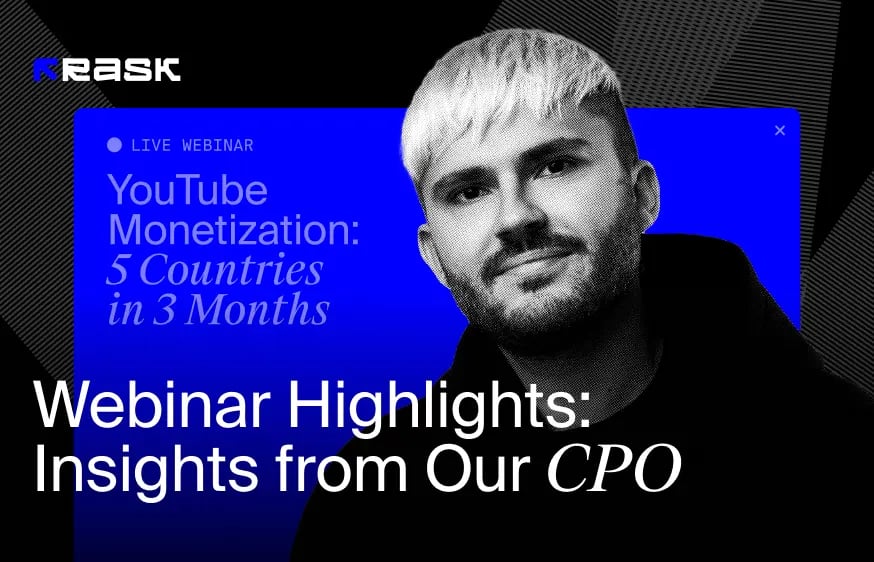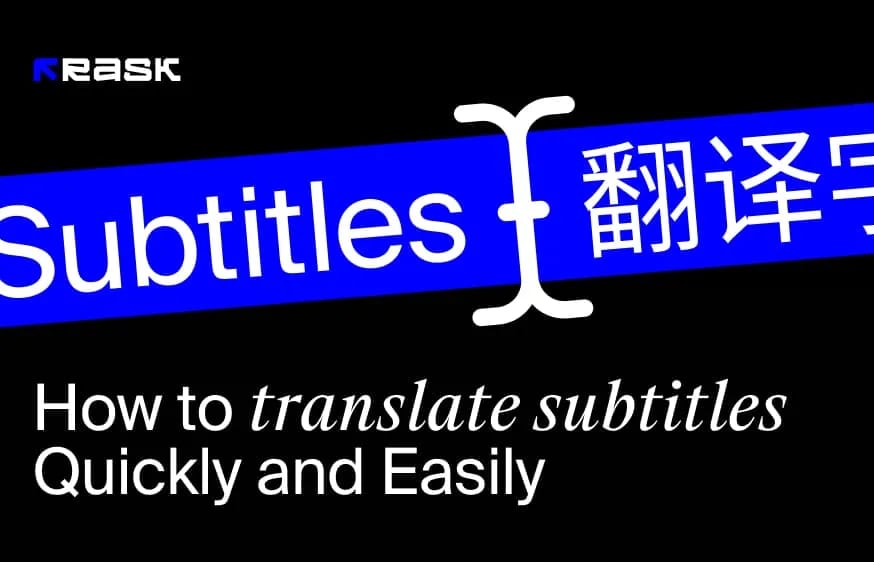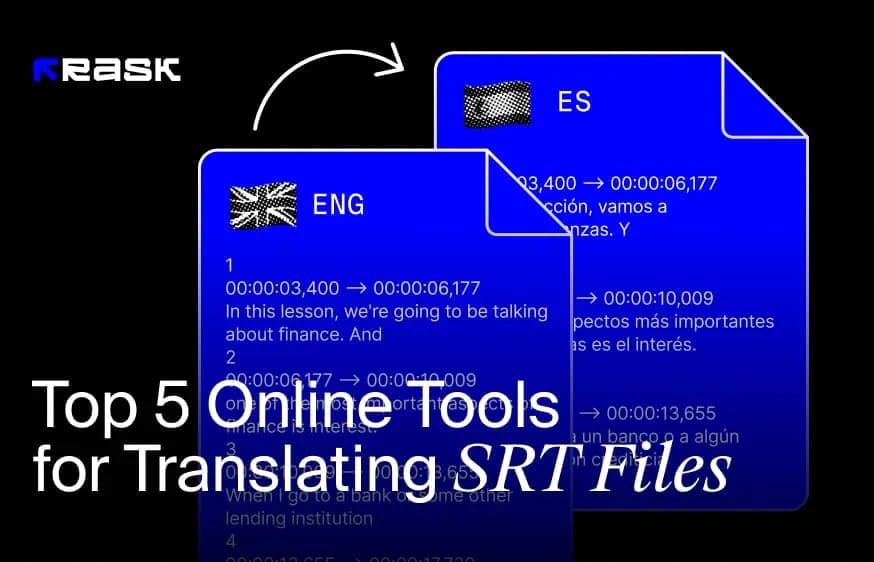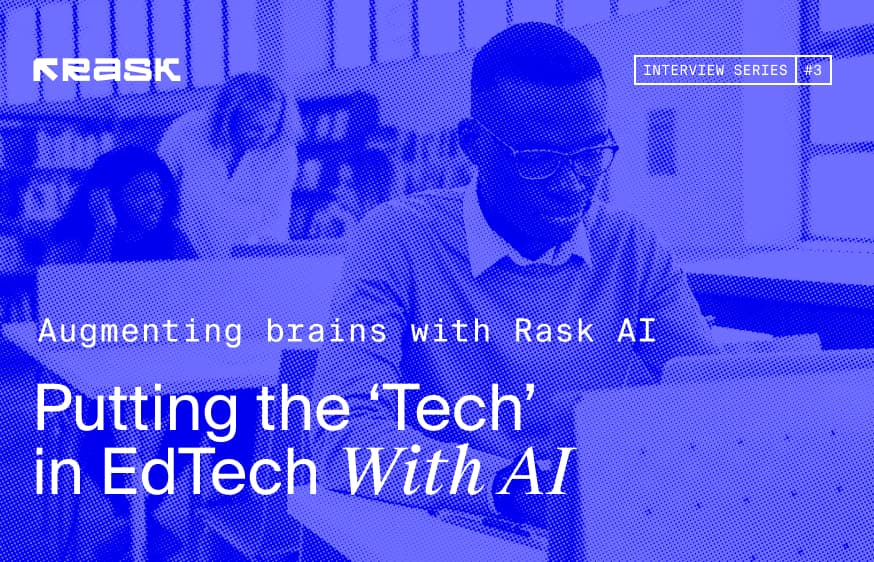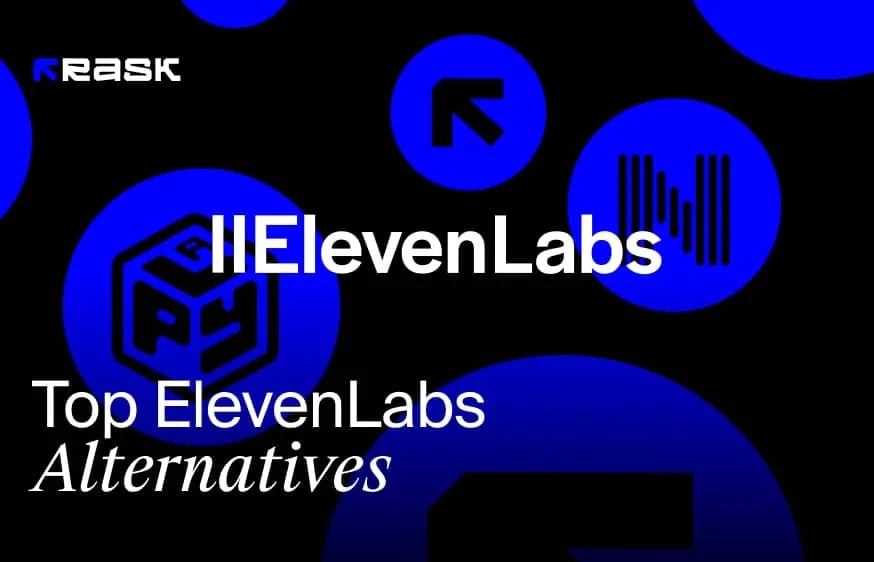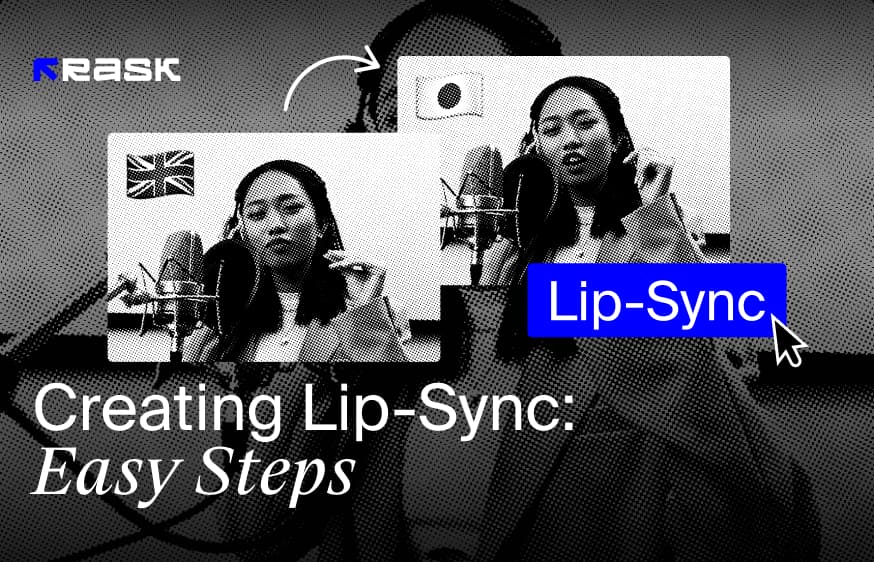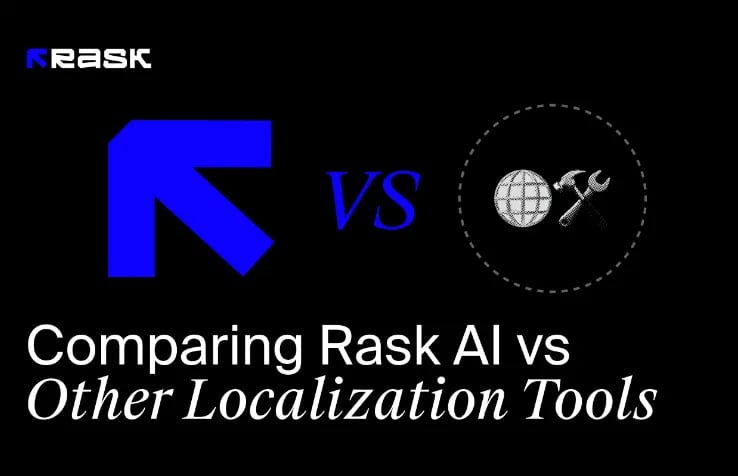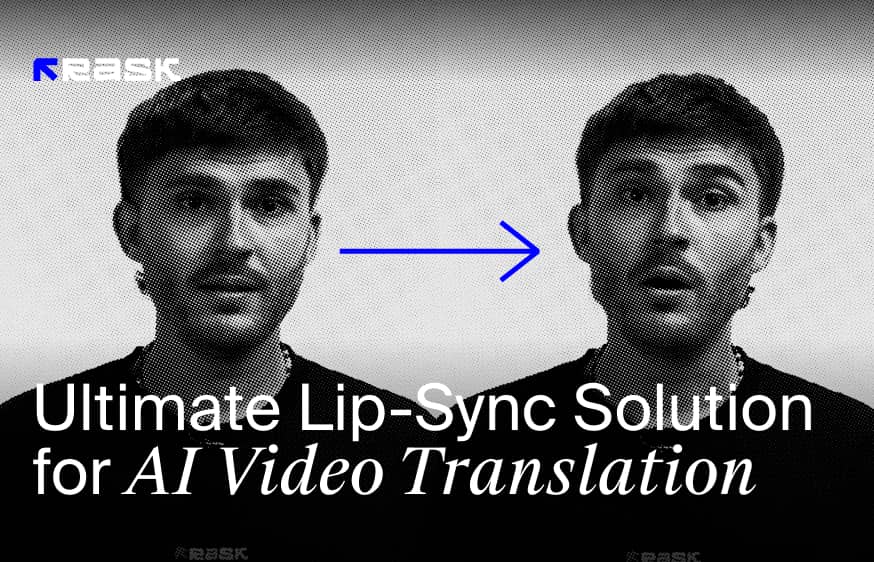Lip sync is the ultimate tool used in video and audio productions, and it is rapidly growing in popularity thanks to today's need for video content. While it is also used in film production (which was actually the original purpose), lip sync is now a go-to option for both long- and short-form videos in marketing.
Today's widespread use of various social media channels drives the need for more personalized and original content. This forces creators and marketing team members to find new solutions and tools to stand out from competitors and cover customer's needs.
Lip sync is all about someone's lip movements and actions matching the sound they are supposed to make. This makes it possible for the viewer to believe that this person in the video is actually making these vocals (singing or speaking) at that moment, while originally, the video comes in a different language.
Lip syncing has quickly become an amazing technology that is now used in different fields and not only for entertainment. We created this article to help you dive deeper into the topic of lip sync, specifically for content creators and marketers: why consider using this technology and how.
What Lip Sync Means?
Lip sync is an animation technique involving character’s lip synchronization (usually animated characters, though these could also be a regular actor in the video) with recorded speech or audio.
Lip sync technology uses Artificial Intelligence (AI) and lip sync apps to ensure that the characters' lip movements perfectly match the words being spoken, allowing for a truly authentic and life-like visual representation of recorded speech in another language.
From applications for language learning that offer instant pronunciation feedback to AI-powered customer service platforms, where animated characters come to life with accurate lip movements in any chosen language just using recorded sound, the power of AI and lip sync technologies has many practical use cases in different industries where marketing is the key one.
What is the Difference Between Voice Over and Lip Sync?
If you work with video content, then you may already know terms like voiceover and dubbing. Now, we have another term: lip sync. And sometimes, it could be challenging to differentiate all these terms, especially when some have similar approaches and purposes.
However, there are tangible differences between voiceovers, dubbing and lip sync. The main difference between those terms is that dubbing requires the new language and recorded sound to act like it is an original soundtrack.
Dubbing means voice actors act the new audio entirely, mirroring the same tone, emotion and cultural nuances. In contrast, voiceover requires less dedication and performance.
The voiceover process exemplifies foreignization, allowing viewers to experience some foreign elements, while dubbing aims to hide the signs and effects of audio translation and pretending that the lip synced video is the original version.
And lip sync is the dubbing subcategory used to power up the dubbing process, matching lip movements with newly recorded sound. During lip syncing, the audio is carefully timed so it perfectly matches the onscreen character's lip movements as closely as possible, ensuring viewers won't notice that the video has been lip synced.
Both dubbing and voiceovers are widespread among creators and multimedia giants like Netflix and Amazon. These solutions are used to help businesses and marketers reach a global audience, post content and add personalization in different channels.
Use Cases of Voiceover and Dubbing with Lip Sync
Voiceover better suits short-term content where the focus is on information instead of expression. For instance, voiceover is great when you need to translate basic staff training videos and instructions, international interviews, or international news reports.
Since dubbing helps hide that the content is translated, it is best for both short-term and long-term video content for entertainment, like television series, films, educational content with complex words or videos intended for children.
What is the Difference Between Lip vs Phrase Syncing
There are two ways you can lip sync the video. One is more accurate and, therefore, expensive. The second one is more flexible and acceptable when it comes to lower budgets or short videos as a part of video marketing to synchronize lip movements with any chosen generated or recorded sound. Let's explore both of them in more detail:
Lip Syncing
The lip syncing technique is much more complex when compared to just getting the timing right–you will need to get the mouth movements right. All words spoken will have an effect on the speaker's face, like "O" will obviously create an oval shape of the mouth so it won't be an "M", adding much more complexity to the dubbing process.
The price for the process is also much higher, and it's really no longer a simple translation. Marketing team members can be involved to boost creativity and to make different words match the speaker's face regardless of the language used in the pre-recorded speech.
Although these members can help with lip sync and dubbing, AI-powered lip sync tools are also a way to go. These apps reduce the need for a voice actor since AI lip sync apps can generate different voices and then edit the video so it perfectly matches the recorded sound.
Phrase Syncing
Even though regular lip sync is much more accurate and delivers better results, phrase lip sync is the most popular form of making audio match a given text and time.
Choosing the phrase lip syncing means you pay less since you will only need to get the "most" of the screen time correct. It is worth noting that there might be an understanding that the person speaking is not saying this in the audio language.
As you might expect, the lip synchronization isn't perfectly timed so it might be considered a clumsy job. For example, one phrase may take 3 words in English, but it will take 8-9 in Spanish or Italian, meaning the audio will be too long for the original lip movements.
While some engineers working with lip sync the video playing with the dialogue and the audio may shorten the recorded version a little, it will significantly differ from the original audio lengths, so it may confuse viewers.
The Different Types of Lip-Syncing
Lip synch can be divided into different types, and each caters to different preferences and styles. Below, we are going to take a closer look at the diverse types of lip syncing performances that you may consider:
1. Traditional Lip Syncing
Traditional lip sync is the most common type, where characters mimic singing or speaking along to already recorded sound. Traditional lip sync can be seen in live concerts, music videos and sometimes on social media platforms like TikTok where creators synchronize lip movements with popular songs, recorded audio or someone else singing.
2. Drag Lip-Syncing
Lip sync plays a crucial role in drag culture, where the performer showcases their talent by mimicking a big song or monologues, adding their personal touch and personality to elevate the performance.
3. Virtual Lip-Syncing
Virtual lip synch was achieved thanks to the advancements in technology. It is an excellent way for animated characters to appear more realistic and grow engagement. Being powered by AI and motion-capture techniques, creators can easily sync the lip movements of their digital avatars with pre-recorded sound, dialogue or big song lyrics.
4. Celebrity Impersonation Lip-Syncs
This is also an incredibly popular type of lip syncing that is used in social media channels. Creators can impersonate celebrities through lip-sync performances, where AI algorithms learn their target's mannerisms, dialect, voice inflections, and facial expressions to match lip movements of a character with a recorded sounds or song.
5 Benefits of Lip Sync in Marketing
1. Content Localization
Localization means adapting the business and its elements, including video content, to different countries and locales. The idea of going global is something that the majority of companies and creators are looking for in 2023. With the amount of tools and technologies available today, no one wants to miss the opportunity to limit their audience reach.
Whether for entertainment or corporate purposes, dubbing and lip synch are essential elements of localizing video content. While dubbing alone is good, lip-syncing the video allows the new version to be much more authentic and personalized, meaning companies can translate their brand message into many languages without breaking the bank.
A professional dubbing specialist or an AI lip sync app can create a voice that instantly engages your audience and hides any side of the video being translated and localized. Customers who believe the product was specifically made for their market and their needs are more likely to buy from your business, so lip synchronization of the recorded speech is essential for successful video content localization.
2. Grow Viewer's Attention
There are still companies that choose simple translation through captions or subtitles. Another half chooses voiceovers, which isn't actually a bad idea, though it still can't hide the fact that the video was translated. Therefore, by dubbing your videos with lip sync features, businesses can really stand out from the crowd.
Video marketing is extremely popular, and there are many social media platforms designed specifically for videos, like TikTok, Instagram Reels and YouTube Shorts. Modern customers can quickly leave the video if its quality is poor. The same goes for voiceovers.
Therefore, ensuring your audience is engaged (and, in the ideal version, impressed) by the quality of your content in terms of lip sync, timing, audio quality, and information you provide is truly the only proven way to achieve ROI you expect and grow sales.
3. Establish the Business Name in a New Market
As we mentioned, videos are one of the most popular forms of content today. Let's say you run an EdTech company that wants to post content and localize business in more than one country. You can go with the cheapest option - translate educational video materials with subtitles and captions or just generate a voiceover.
While you might still get customers from this type of content, it will lead to poor user experience and won't let your students really comprehend the material and gain knowledge. Therefore, your business will unlikely establish a strong reputation as a trusted EdTech provider (and there are millions of competitors out there).
When you lip sync the video, you show your students that you developed this content specifically for them. You invest time and resources, and they can benefit from content much more since they won't feel confused when watching lectures.
Studying should be as seamless as possible, so you will want to make it really easy and appealing for students to read your educational videos, especially when it is a remote learning program.
When customers are happy with the knowledge they get and how seamless the overall experience is - they recommend you, interact with your content more and establish the brand in a highly competitive market.
How AI Powers Up Dubbing & Lip Syncing
AI tools for dubbing and lip lip synch use artificial intelligence (AI) to generate recorded sound automatically without involving a voice actor. AI's lip sync popularity in video marketing makes it possible for creators and companies of all sizes to start benefiting from content localization since AI dubbing and lip sync tools offer accurate and quick video translations, voiceover and lip sync, overcoming freelancers who tend to do a clumsy job.
AI technology automates dubbing and lip sync processes using Machine Learning (ML) algorithms to translate the original audio. AI tools can also synthesize a new voice that will sound human-like, though it depends on the tool you choose.
Once the recorded voice is ready, these tools help in lip synchronization with the recorded speech, producing a dubbed version of the original video material.
Dubbing and lip synch were mostly performed by a human specialist that records translated vocals and edit the content with a computer program. However, AI tools are gaining popularity in this domain since they can significantly reduce the costs and time needed to create a recorded speech and lip synced video.
Why Choose AI Dubbing and Lip Sync?
Even though the quality of the dubbed video and synchronization of lip movements will depend on the tools you choose, trusted AI-powered apps offering lip sync features offer the following benefits:
Higher Efficiency
AI is used to automate various processes, and lip sync isn't an exception. In contrast to human dubbing specialists, who can take months to synchronize the dubbed version of the video with lip movements and may also do a clumsy job, AI tools can produce the same quality results within minutes or hours.
Therefore, choosing AI for lip sync allows businesses to increase efficiency, localizing content faster and easier.
Improved Consistency
Using AI for lip sync and dubbing helps ensure that dubbed audio is consistent across different channels. In contrast to human specialists who do a clumsy job in terms of hiring a different voice actor for each platform and locale, AI lip sync tools can create one voice for all countries and platforms and just change the language.
This allows for higher consistency, leading to a more authentic and branded experience.
Reduced Costs
One of the main reasons for modern businesses and creators to choose AI for dubbing and lip synch is reduced costs. Human specialists are a costly option, and more and more companies turn to AI tools for these processes during their localization process.
That is because AI lip sync apps can translate and lip sync your video to a vast list of languages without charging per word and for every new language. Most AI lip sync tools allow users to buy a plan depending on their business goals and operate within the limit, which is a convenient and cost-effective option.
Most Popular (and Infamous) Lip Sync Cases
Kinder Christmas Marketing Campaign
Kinder Christmas Advent Calendar is a great example of lip syncing being used in marketing. Instead of hiring a team of specialists and a voice actor who will create personalized videos for Kinder customers, the company decided to let customers be the ones who can film Christmas videos for their loved ones.
The campaign suggests customers buy a Kinder Advent Calendar and scan the QR code. Users then lend to a page assembling the North Pole where they can see a portable North Pole/Kinder dubbed video from Santa in their language. They can personalize this video by adding the recipient's name, photo, and more.
This personalization is possible because the Kinder team synthesizes voices in different languages and synchronizes Santa's lip movements with the new audio. This way, customers all across the world can enjoy the personalization without noticing that the video was dubbed.
A Pop Star Lip Syncing
Lip sync is pretty popular among pop stars, musicians and in drag culture. The main reason for that is that lip sync ensures the performer will not be out of tune or strain their voice. Even though a pop star may perform with lip sync for the majority of the songs, they may also lip sync in just difficult big song parts and then resume singing live.
For example, a well-known pop star Britney Spears was accused of lip synching. Fans say that she was lip syncing during several performances, including a pitstop in Japan, where the video seemed to show her mouth out of sync with the recorded sound and the Las Vegas concert, where she faced the same claims from fans once again.
Another example of a pop star lip syncing the song is Star Spangled Banner. Houston's star spangled banner performance is extremely popular and considered the best-ever version of the song.
Nevertheless, a pop star's producer admitted that the Star Spangled Banner came with recorded sound and was lip synched by Houston. You can watch this video on YouTube.
Rask AI for Dubbing and Lip Movements Synchronization
Rask AI is a dubbing and lip sync tool that allows creators and companies to reach a global audience with ease and confidence in the dubbed video. Being used by big song signers, EdTech companies and creators of all sorts, Rask AI is an excellent choice for video creation, editing and lip sync.
The tool is powered by technologies like AI, ML and Natural Language Processing (NLP), allowing creators all the features needed to post their video content (from a big song, music videos, popular songs, podcasts, Shorts to long educational videos without time limitations).
This tool can take your video and automatically generate synthesized voices in over 29 languages, where the newly recorded sound. Rask AI can also synchronize lip movements with its Lip Sync feature, meaning creators can take one video and generate their own voice throughout all languages, localizing it in various countries with different calls to action for each locale, offering a branded experience across channels.
Aside from the Lip sync feature, Rask AI lip sync tool can also translate videos to more than 130 languages and effortlessly post them via sharing options and integrations the tool offers. Rask AI lip sync tool allows creators to easily reuse different forms of content.
For example, creators can transcribe the video to use the text as an article, social media post or create a page for a podcast with information taken from it.
Let's Wrap Lip Synch Up
Lip sync is a popular practice in today's digital world. Formerly used for a big song and by a pop star like Witney Houston during performances, the lip sync feature is now used in video marketing as a part of dubbing and localization to hide original vocals and grow personalization.
While lip sync is a challenging process, it is the only practice-proven way to organize authentic and personalized experiences in different aspects of marketing, therefore reaping the benefits of localization.
Luckily, modern creators understand the power of choosing content forms that their customers like the most and can use the power of AI lip sync to streamline and ease the process, saving both time and money instead of hiring freelancers and worrying about them doing a clumsy job.
FAQ
Lip sync is a synchronization of the lip movements of a character in the video with the newly recorded sound in another language. This process ensures accurate timing and is used to hide the fact that the video was dubbed, increasing the chances of successful video content localization. Lip sync is also used in film production and by musicians, like Houston's Star Spangled Banner.
The short answer is yes, though most people are more concerned about ethical issues related to the recorded speech or recorded sound. If we talk about lip sync in marketing your own video materials, it is ethical to lip sync the video. Lip syncing is not considered a copyright infringement in music, so it is legal to lip sync. For example, Houston's producer said she was lip syncing her Star Spangled Banner performance.
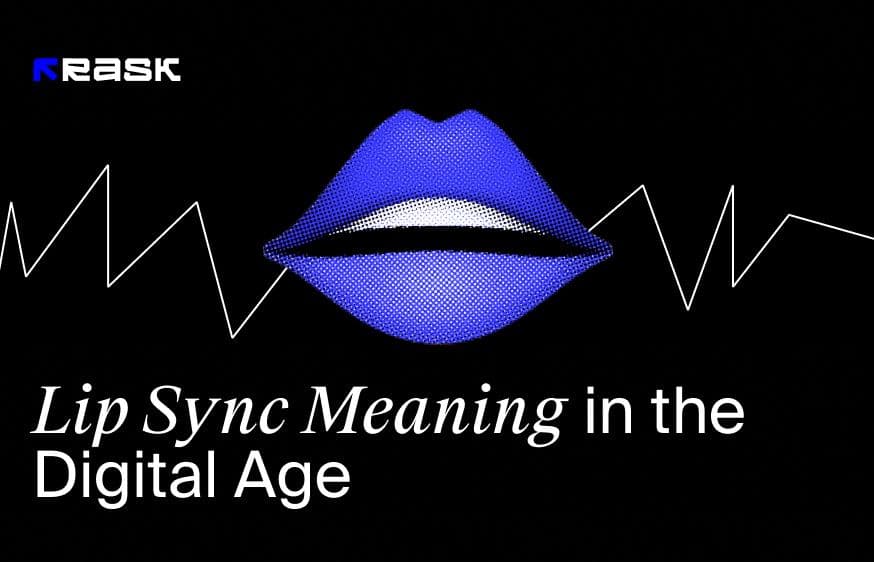
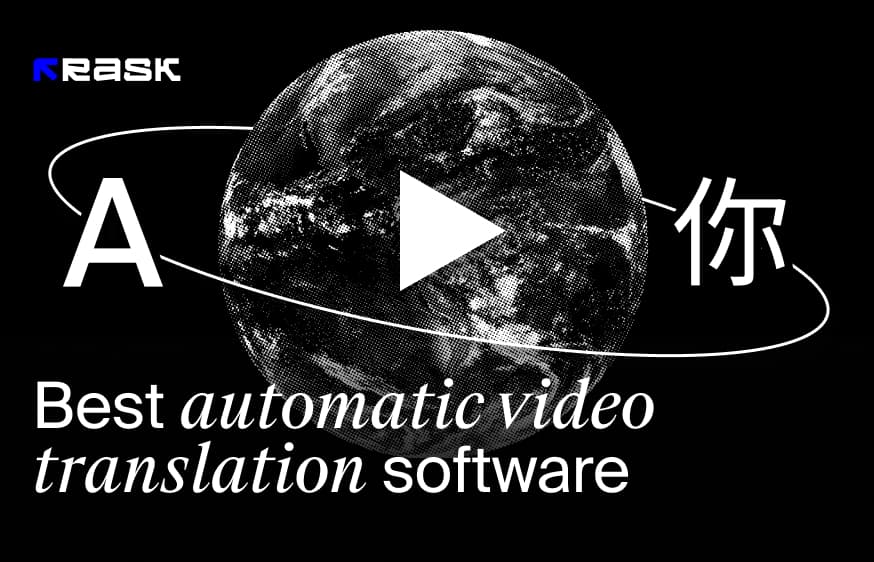
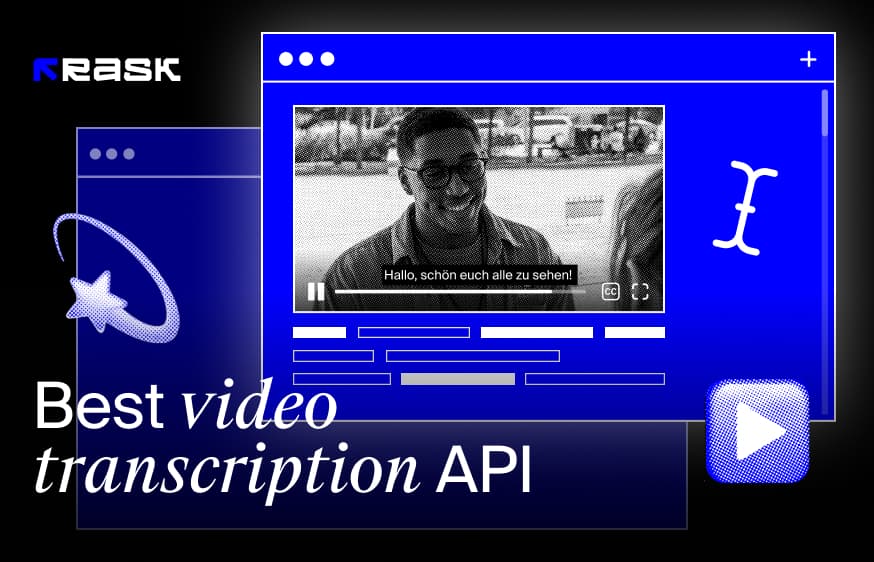
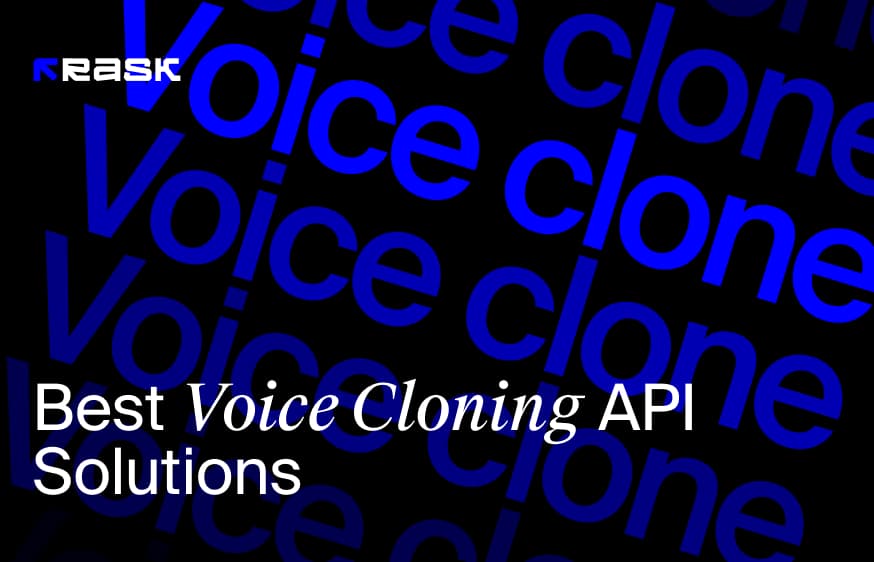
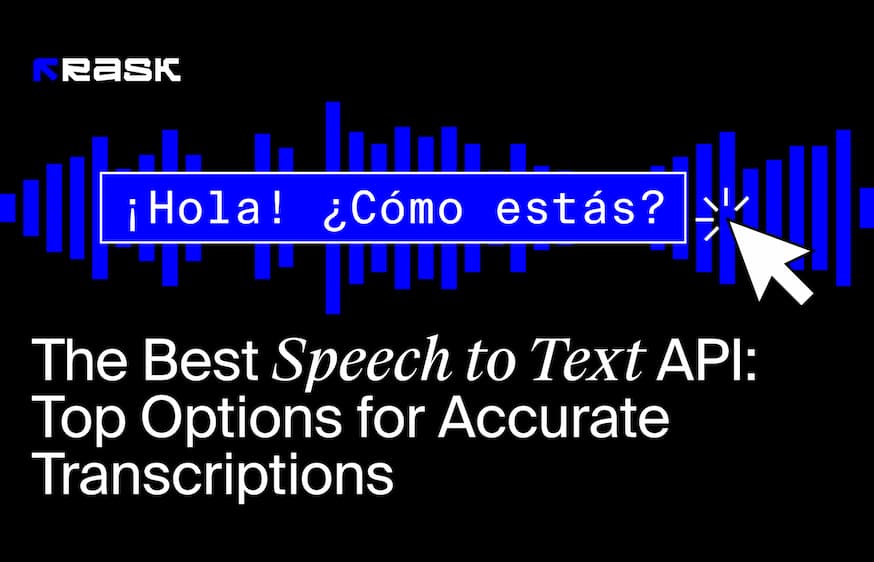

.jpg)
.webp)
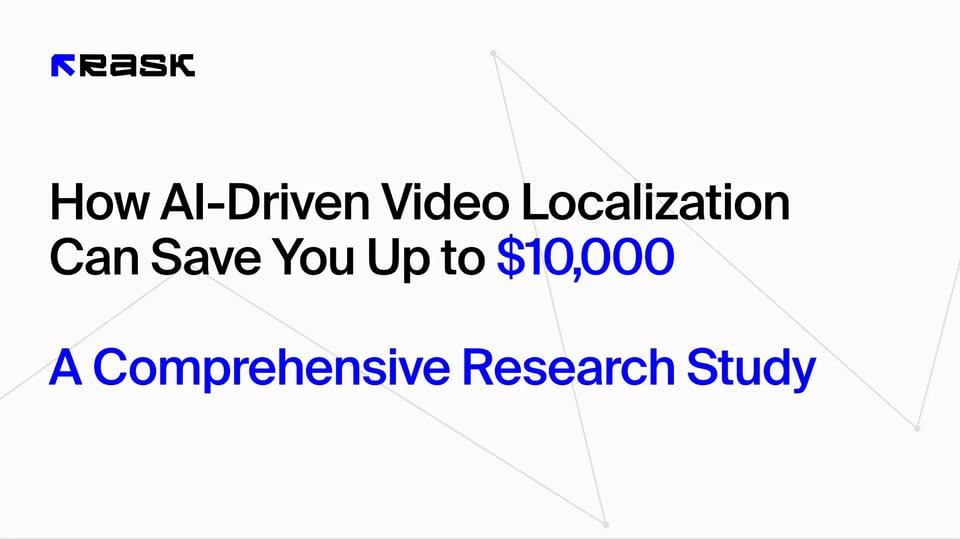
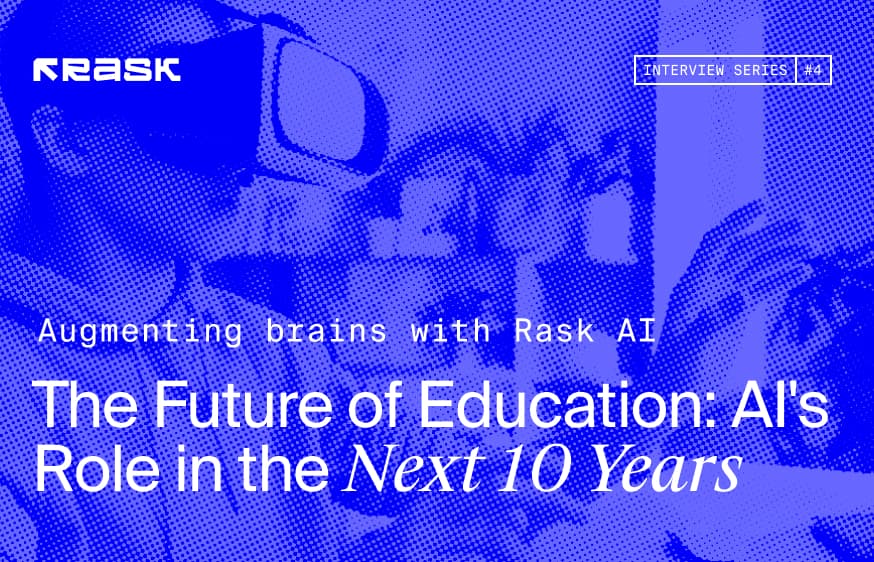
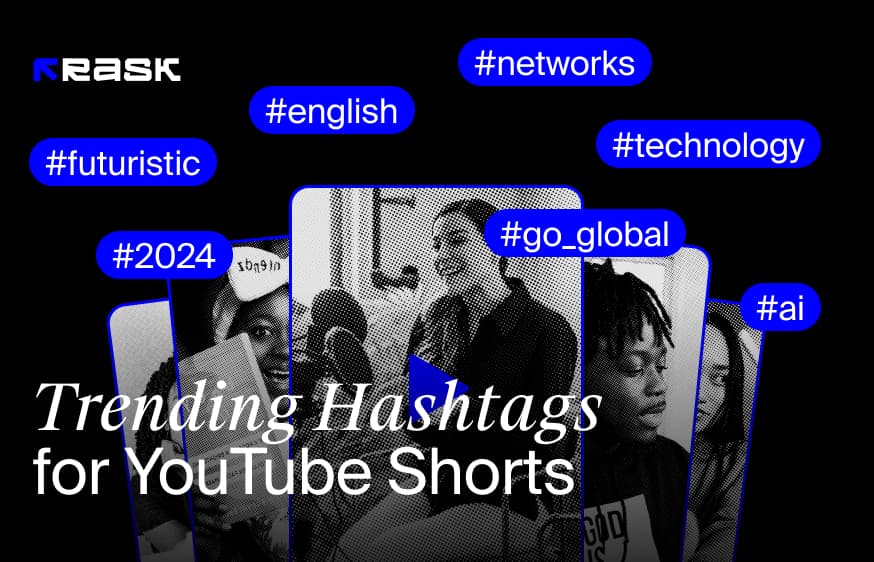
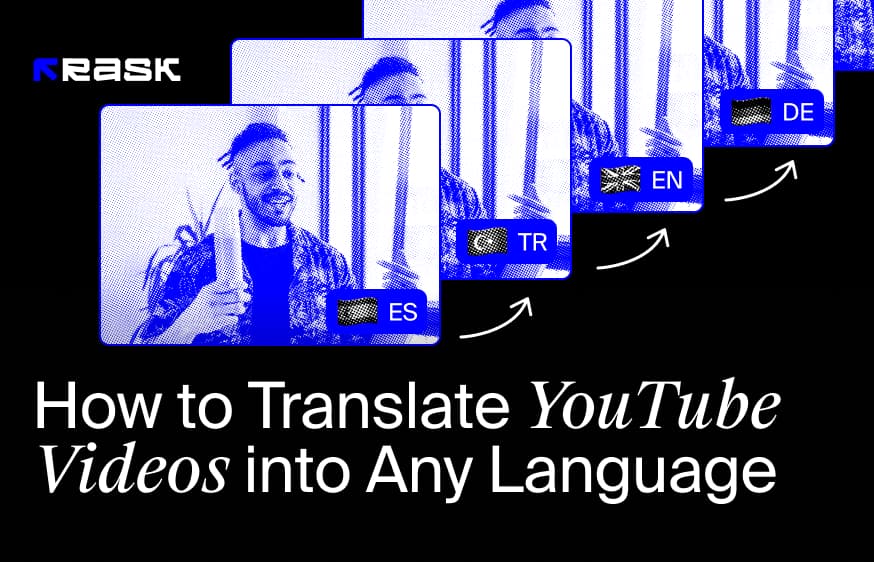
![8 Best Video Translator App for Content Creators [of 2024]](https://rask.ai/cdn-cgi/image/width=960,format=auto,fit=scale-down/https://cdn.prod.website-files.com/63d41bc99674c403e4a7cef7/6668a3dcd3175bd1d1c73c81_Best%20video%20translator%20apps%20cover.webp)
![Best AI Dubbing Software for Video Localization [of 2024]](https://rask.ai/cdn-cgi/image/width=960,format=auto,fit=scale-down/https://cdn.prod.website-files.com/63d41bc99674c403e4a7cef7/66685014f68137eb05c89c16_Cover.webp)
